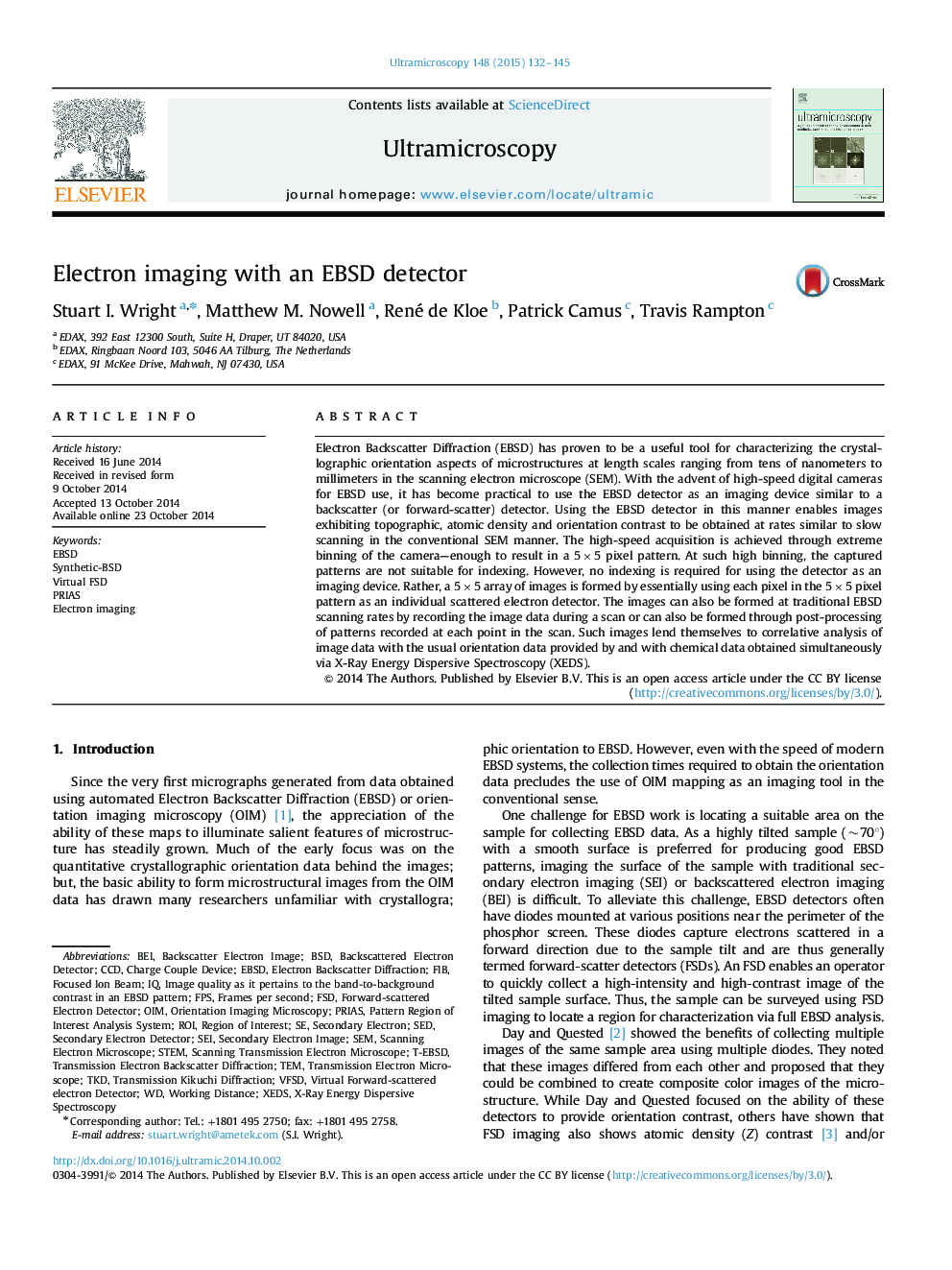| Article ID | Journal | Published Year | Pages | File Type |
|---|---|---|---|---|
| 8038232 | Ultramicroscopy | 2015 | 14 Pages |
Abstract
Electron Backscatter Diffraction (EBSD) has proven to be a useful tool for characterizing the crystallographic orientation aspects of microstructures at length scales ranging from tens of nanometers to millimeters in the scanning electron microscope (SEM). With the advent of high-speed digital cameras for EBSD use, it has become practical to use the EBSD detector as an imaging device similar to a backscatter (or forward-scatter) detector. Using the EBSD detector in this manner enables images exhibiting topographic, atomic density and orientation contrast to be obtained at rates similar to slow scanning in the conventional SEM manner. The high-speed acquisition is achieved through extreme binning of the camera-enough to result in a 5Ã5 pixel pattern. At such high binning, the captured patterns are not suitable for indexing. However, no indexing is required for using the detector as an imaging device. Rather, a 5Ã5 array of images is formed by essentially using each pixel in the 5Ã5 pixel pattern as an individual scattered electron detector. The images can also be formed at traditional EBSD scanning rates by recording the image data during a scan or can also be formed through post-processing of patterns recorded at each point in the scan. Such images lend themselves to correlative analysis of image data with the usual orientation data provided by and with chemical data obtained simultaneously via X-Ray Energy Dispersive Spectroscopy (XEDS).
Keywords
ROIFSDBSDOIMXEDSPRIASEBSDFIBTKDSEIFpst-EBSDCCDSecondary electron imageSecondary electronTransmission Kikuchi diffractionTemFocused ion beamcharge couple deviceelectron backscatter diffractionStemX-ray energy dispersive spectroscopyWorking distanceframes per secondSEMregion of interestscanning electron microscopeTransmission electron microscopescanning transmission electron microscopeOrientation imaging microscopysedBEI
Related Topics
Physical Sciences and Engineering
Materials Science
Nanotechnology
Authors
Stuart I. Wright, Matthew M. Nowell, René de Kloe, Patrick Camus, Travis Rampton,
